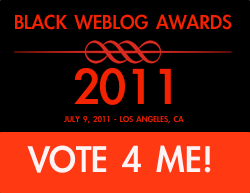 You spend hours of you own time creating a wonderfully helpful, witty or provocative article to serve your legion of adoring fans. You read and re-read your post to make sure there aren’t any spelling errors and that what you’ve written makes some sort of sense. You then carefully apply your images, formatting and ad-revenue measures to the post right before it goes live. After all of that hard work, you post your article for the world to see and wait for the masses to come. Several hours later – nothing. You Google your new article to make sure it got indexed when you find….what for it – your entire article on someone else’s site.
You spend hours of you own time creating a wonderfully helpful, witty or provocative article to serve your legion of adoring fans. You read and re-read your post to make sure there aren’t any spelling errors and that what you’ve written makes some sort of sense. You then carefully apply your images, formatting and ad-revenue measures to the post right before it goes live. After all of that hard work, you post your article for the world to see and wait for the masses to come. Several hours later – nothing. You Google your new article to make sure it got indexed when you find….what for it – your entire article on someone else’s site.
You’ve Been Douche Bagged
Welcome to the Internet Blogging 2010. With most people understanding it’s not a good idea to send large sums of money to Nigerian Princes and you really shouldn’t click on that Viagra email – “Article Jacking” (I just made that up) is becoming the new sleaze bag way of generating revenue. Website owners use a number of advertising platforms on their sites which pay them when users click on one of those ads – Google Ads being the most popular. What most people don’t know is – even if no one actually clicks on an ad, the website owner will still get paid based on the number of times ads are displayed. More page views, more money.
With this in mind, it’s easy to understand why someone steals and reposts content – it’s free money. Someone Googles the keywords in your article, the thief’s site appears in the search results and the thief gets paid for visit. Nice! Frequently, the sites displaying your stolen content have no original content at all; they just display hundreds of stolen articles for the purposes of gaining advertising revenue. No one is immune to this – really shitty blogs with no readers will get jacked just as much as popular and well written blogs.
In the old days, these types of folks would copy-n-paste parts/entire articles into their site – a simpler proposition when there were only thousands of blogs. As there are now literally millions of blogs, it is much easier to steal this content in an automated fashion – using your own RSS feed.
What You Can Do
Luckily, you have the Digital Millennium Copyright Act (DMCA) on your side. The DMCA (or EUCD for folks in the European Union) is a set of copyright laws that, amongst other things – allows you as the content owner to initiate a “Takedown Notice”. Once you provide notice of the copyright infringement, by law the offending party must remove the content. In addition, sending the Takedown Notice is free! The bad news is you are responsible for uncovering each instance of your content being infringed upon, the douche bag posting it and generating the takedown notice(s).
There are few ways to determine whether your content has been infringed (stolen) – the easiest is to simply do a search on your site name, article name, specific keyword or a combination of the three. Companies like Copyscape claim to be able to search for your content across the web, but in my experience it didn’t catch several blatant instances that were in Google’s search results. Another useful method is to use Google’s Blog Search engine – which usually gives much better (targeted) results than the general Google web search. If using the Google blog search, sort the results by “last 12 hours” as this will limit the search results and make your article (along with the stolen version) easier to spot.
Once you have identified the URLs serving your stolen content, follow these steps to get it removed:
- Using the domain name of the URL hosting your content (e.g., imadouchebag.com), perform a Whois Lookup. In the results, you are looking for the line that says “Name Server:”
- Usually, the “Name Server” taken from Step 1 will tell you the web hosting company. For example, the name server for imadouchebag.com could have something like “NSXXX.HOSTGATOR.COM” in the field. In this example, it’s pretty easy to see the web hosting company in this case is Host Gator, LLC. If you can’t tell who the host is looking at the Name Server, you can perform a Name Server Lookup to get the owner/IP address.
- Send the Web Hosting Company a DMCA Takedown Notice informing them one of their customers has infringed on your content. The contact information is usually on their site or you can use the “support” email address. Here is a Web Host DMCA Template (in Word 2007 format) I created you can use.
- Finally, send a Takedown Notice to Google to get any URLs removed from all Google search and application properties – including page cache. You can use the Google DMCA Template (in Word 2007 format) I created.
Google and most web hosting companies require you to mail or fax any Takedown Notice requests. If you don’t have a fax machine, use Faxzero to fax the two Word documents above for free. Some folks suggest sending the offending website owner a takedown request – something I strong recommend you not do. You are more likely to have your email address sold to spammers than you are having your stolen content removed.
Thoughts on Preventing Copyright Infringement
It really isn’t possible to prevent someone from stealing your online work – not very well at least. There are a number of JavaScript tools than prevent right-clicking or copying any text on your page; however, these tools are easily defeated by anyone with a minimal level of skill. Also, most content isn’t stolen via Copy-n-Paste anyway – it’s stolen directly from your RSS feed. Of course you could disable your RSS feed or only include summary information in the feed – but that would have a greater negative impact in terms of growing your audience than the positives of eliminating theft would solve. Finally, you could pay people like Copyscape to ‘monitor’ your site and act on your behalf; but I have a hard time believing this is worth the effort if their search apparatus does such a poor job identifying infringement in the first place.
This brings up an interesting question – should you even bother removing stolen content in the first place? Sure sending Takedown Notices are free to do, but it does take time and effort. I know many people don’t use any advertising platforms on their blogs, so the loss of revenue is not an issue. While that may be true, the presumption is you write your article with the intent of someone actually reading it. Loss of traffic means fewer people are reading your content.
With that in mind, I personally take the following approach to combating copyright infringement;
- When I find an instance of infringement, I’ll first determine if the article is copied in its entirety and if there is a link back to my site. In a strange way, this kind of infringement is somewhat helpful – as it builds link backs necessary for search engines page ranking (albeit very little). If on the other hand, there’s no link or it’s more than just an article summary or the site quality is obviously trash (most are) and I’m not in the most pleasant mood ever (and I rarely am) – then it’s time to open a can of whoop ass.
- I place the “Jay Travels” copyright logo at the bottom right of every picture on this site. Yes, it can be removed – but it’s just easier for douche bags to get someone else’s images than to Photoshop mine (the locked front door theory).
- The “Jay Travels” logo is embedded on the bottom left corner of every video on this site, as well as those videos on YouTube. This way, when video aggregators pull my video from YouTube – the viewer knows where it came from because the brand is always visible. Now the Douche Bag is working for me.
- I use a robots.txt file that tells Google, Yahoo, Live, etc. not to index any content in my /video or /image directories. This doesn’t hide the files but it means my video and images never show up in search engines – just the pages in which they are viewed in display. You can go further by preventing any browser/service from accessing any image/video on your site externally by modifying your .htaccess file (advanced users only)
I don’t bother with changing the RSS feed, copy-n-paste JavaScript or any other nonsense – the benefits are small and the time required too great. So that’s it – hopefully this article will prove helpful to those that have or will encounter this situation.
And to the current and future digital content thieves – stop acting like Douche Bags!!!
Important Note: This article is about online copyright infringement – not Defamation or Trademark Infringement. If someone writes on their site you are a “jerk” – you cannot use the DMCA to get that content removed. In addition, if someone uses your logo not associated with copyrighted material and not fair use, you cannot use the DMCA to have it removed either. An example of Trademark Infringement is if “McDowells” from the movie ‘Coming to America’ started a burger website. In both of these cases, you will need to utilize other tools (attorney) to have the content removed. I point this out because Google will likely deny all DMCA notices that are actually Defamation/Trademark infringements.














